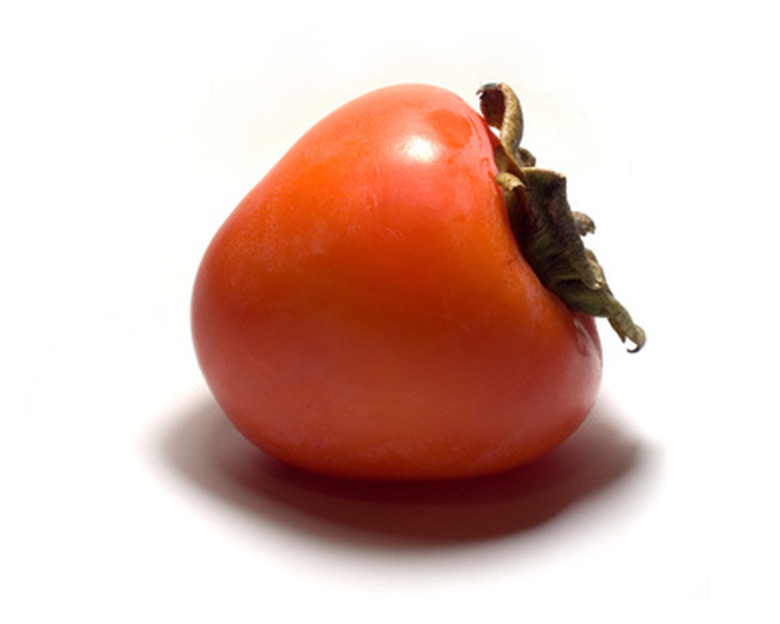How To Identify Male Persimmon Trees
Persimmon fruit trees are dioecious species, meaning that a tree will produce either male or female flowers. This differentiation is the key way to determine a tree's sex, save for the presence or lack of fruit development. This requirement calls for male and female trees to be planted in general proximity to one another to allow for cross-pollination and fruiting, usually at a rate of one male to eight female trees.
Rarely, male and female persimmon trees can possess perfect flowers with both male and female parts so they can self-pollinate. However, even in this rare instance only female persimmon trees can produce fruits. Persimmons begin to flower and fruit regularly at three to six years old. Before this, determining the sex of the tree is difficult if it's not labeled.
- Persimmon fruit trees are dioecious species, meaning that a tree will produce either male or female flowers.
Step 1
Look for male persimmon flowers in the spring that are clustered on the branches in groups of three and are immediately adjacent to a leaf axil.
Step 2
Check for the size of male flowers looking for those that are 1/4 to 1/3 inches in diameter versus the larger female flowers that measure 1/2 to 3/4 inches in diameter.
Step 3
Identify the unique male flower stamens protruding up through the center of the flower with 16 to 24 yellow to slightly green stamens arranged in two concentric rows. Female flowers sport just four to eight, shorter and less developed stamens.
Step 4
Observe the lack of fruit development on mature trees over three to six years of age in the summer. Male trees will not develop persimmons after bloom, while female trees will.
Height Of Persimmon Trees
Texas persimmon (Diospyros texana), also known as Mexican persimmon, is a deciduous tree suitable for U.S. Department of Agriculture plant hardiness zones 7 to 9. The black or green fruit, produced from white flowers, is edible. Japanese persimmon (Diospyros kaki "Hachiya") grows in USDA hardiness zones 7 to 10, and grows 24 inches a season, reaching 35 feet at maturity. Hardy in USDA zones 4 to 9, it is suitable to sun or partial shade and tolerates moist to dry loam, clay or sand. Its high canopy spreads up to 35 feet wide, so space them 20 feet apart if you're planting more than one tree. It blooms in the spring and produces edible fruit in the fall. Hardy in USDA zone 10b, it's a slow-grower that eventually reaches up to 80 feet at maturity — typically five or six years when grown from seed. Fruit ripens in the winter in most areas, turning dark brown or black with a taste similar to chocolate pudding.
- Look for male persimmon flowers in the spring that are clustered on the branches in groups of three and are immediately adjacent to a leaf axil.
- Hardy in USDA zone 10b, it's a slow-grower that eventually reaches up to 80 feet at maturity — typically five or six years when grown from seed.
References
- Purdue University: Japanese Persimmon
- Purdue University: Persimmons
- Cal Poly San Luis Obispo Urban Forest Ecosystems Institute: Texas Persimmon
- Cal Poly San Luis Obispo Urban Forest Ecosystems Institute: Hachiya Persimmon
- University of Kentucky College of Agriculture: Kentucky Trees: Diospyros Virginiana (Common Persimmon)
- Purdue Agriculture: Black Sapote
- University of Connecticut College of Liberal Arts and Sciences: Diospyros Digyna Jacq.
